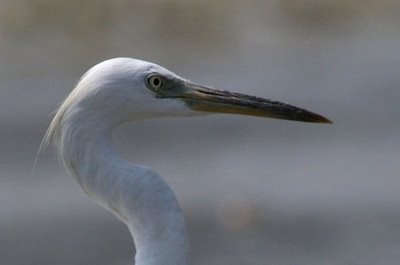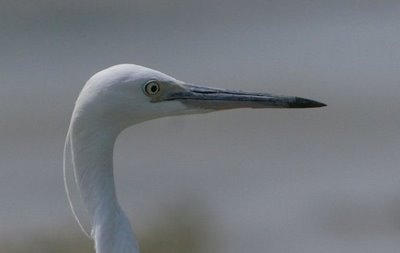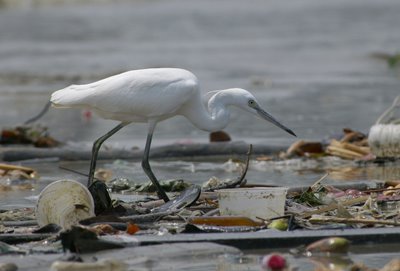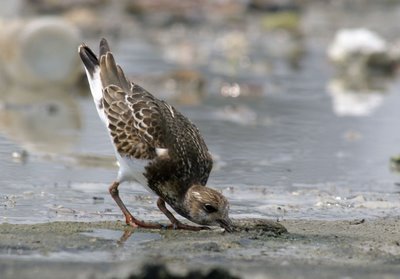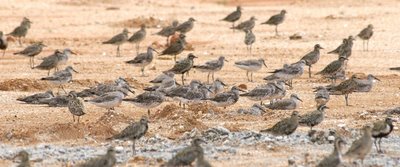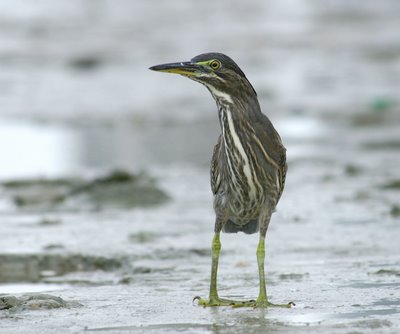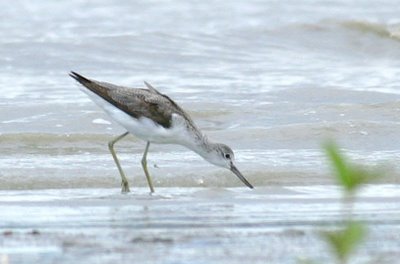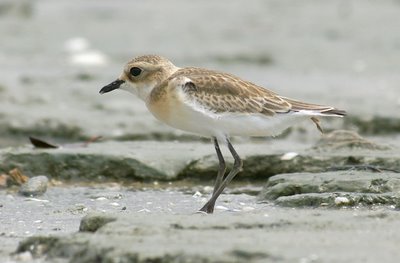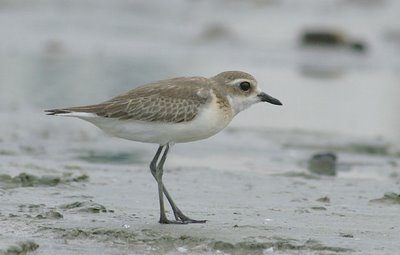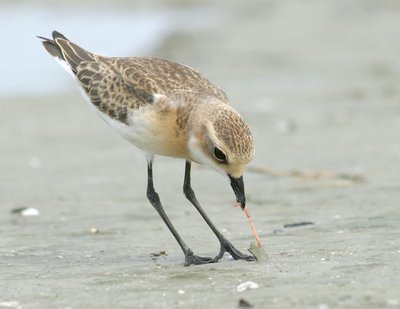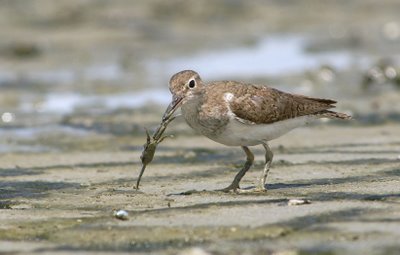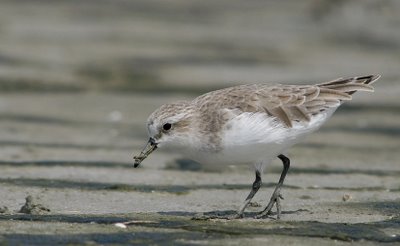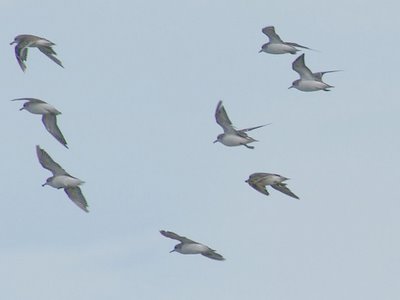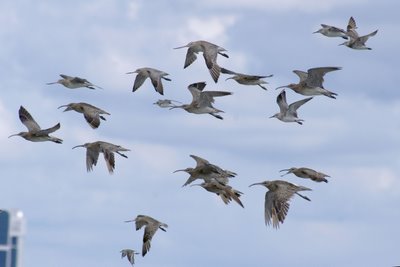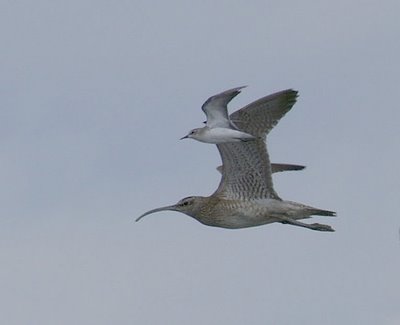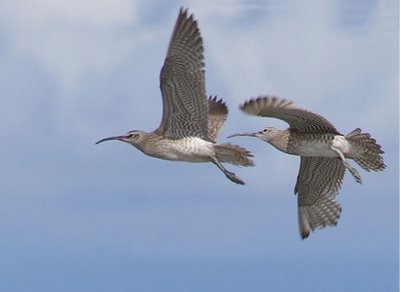
A juv Little Heron having a bad hair day!
I had an unexpected opening in my schedule today, so I managed to get down to the site by late morning. We have had several days of more or less continuous rain and overcast skies, and the numbers of waders present had gone up dramatically. Unfavourable weather during migration season sometimes results in a phenomenon called 'a fall' of birds, when, on occasion, birds seem to fall out of the sky seeking a place to rest and take shelter. They will then wait until the skies clear again before setting off on the next leg of their journey.
The light was pretty terrible for photography most of the afternoon, and I managed to get soaked not once but twice. The first time I was in my hide, I discovered that my box was not waterproof. As the rain poured down, water started to drip through onto my camera, forcing me to make a hurried retreat to the car to dry off the equipment. The rain stopped and I decided to go to the hide again, this time with a dustbin bag to put on the roof of the hide. The next time it rained, the camera was nice and dry, but the rest of me got drenched! I noticed that each time the rain started to come down hard, all the waders left the mud and went up onto the roost site. The second time the rain came down, they didn't return to the mud after the rain stopped, so eventually I abandoned the hide, only to have the birds then return to the mud, right in front of my hide! By this time I decided to abandon photography, and managed to do quite a thorough count instead. Here are the totals:
Whimbrel 250 (2% juvs)
Bar-tailed Godwit 78
Pacific Golden Plover 420
Lesser Sand Plover 270
Greater Sand Plover 13
Ruddy Turnstone 15
Great Knot 40
Red Knot 2
Curlew Sandpiper 130 (5% juvs)
Broad-billed Sandpiper 3 (67% juvs)
Greenshank 9
Redshank 400 (2% juvs)
Red-necked Stint 260 (10% juvs)
Terek Sandpiper 70
Marsh Sandpiper 20
Little Tern 76
Ruff 1
Common Snipe 1
Total 2058
Little Egret 7
Great Egret 2
Juveniles were evident in numbers today, including my first juvenile Whimbrel, Bar-tailed Godwit, Redshank and Red-necked Stints of the autumn. The Ruff, probably an adult male, in non-breeding plumage, appeared in the roosting flock of Redshanks, after I had left the hide. Later it wandered in front of the hide, much to my frustration! I only managed to get distant record shots from the car.
A lone Common Snipe, flushed from the vegetation at the water's edge when I arrived, was another good bird for the site.
Potentially the best bird was a probable Little Stint - a different bird from the one seen on the 19th. It was an adult in non-breeding plumage, but wasn't as obvious an individual as the earlier one. See the pictures and notes below.

A juvenile Broad-billed Sandpiper (right). Broad-billeds are short-legged compared to Curlew Sandpipers (second left) and long-billed compared to Red-necked Stints (left and centre). Juveniles are really smart-looking birds, with a whitish double supercilium and mantle 'V' and beautiful chestnut-fringed upper scapulars and tertials.
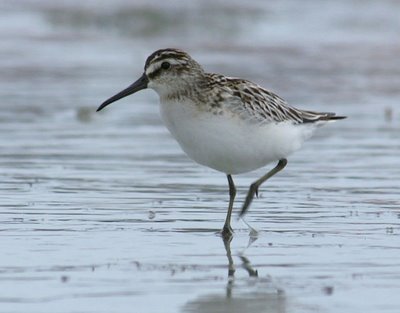
Another view of the same bird, showing the distinctive downward-kinked bill. This was the only picture I got this close, as the sound of my shutter frightened the bird away. One disadvantage of the Konica Minolta is the clunky shutter!
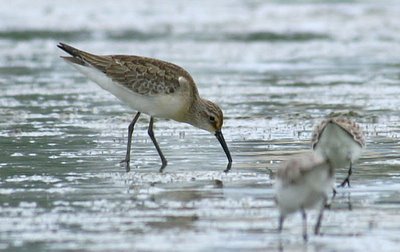
A juvenile Curlew Sandpiper. Juveniles have distinctive anchor-shaped marks on the scapulars, which can make the upperparts look blackish at a distance. They also have a lovely peach-coloured wash to the breast.

Juvenile Red-necked Stints are really smart birds as well. They also have a wash acrosss the breast - greyish-brown, and have dark-centred, white-tipped scapulars. They always look very neat!
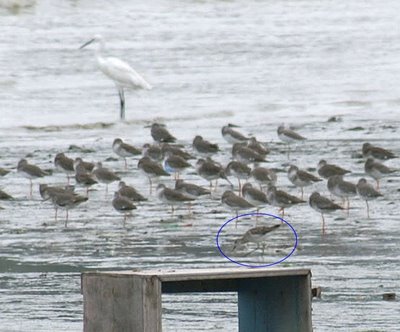
The Ruff wandering around in front of my hide when I wasn't there! It was as big as a Redshank, indicating that it was probably a male. It had grey legs and a short, slightly decurved bill. Another distinctive feature was the pale forehead and chin and dark eye-line. The bird fed continuously while most other waders snoozed.

The lower photo shows an adult non-breeding Red-necked Stint. What is the upper bird??? I suspect it may be a Little Stint. What initially drew my attention to this bird was the complete breastband, which most adult non-breeding Red-neckeds lack, the grey, rather blotchy upperpart colouration, and the shape of the bird, including, especially the bill. The bill was longer, finer-tipped and less expanded laterally than the Red-necked Stints around it, and it had a distinctly heavier body, with more rounded shoulders and a deeper belly. The head was less square, especially at the rear.

I did find the occasional Red-necked Stint which had plumage features very similar to the mystery bird, such as the one pictured here (top). However, the bill, body and headshape were consistently different.

A head-on view of the bird (left) with two Red-necked Stints. This photo eliminates any of the American dark-legged stints, as the bird lacks semi-palmations between the toes. The bill seems thinner than the Red-necked on the right.

This photo shows the overall greyer tone of the plumage than most Red-necked (such as the bird on the right). It also shows the difference in head, body and bill shape well. The bird did not seem noticeably longer-legged than Red-necked Stints around it. Little Stints often appear longer-legged than Red-necked (see the pictures of the bird on the 19th), but I don't know how variable this feature is.

One last picture to show how unlike a Red-necked Stint this bird is in jizz. Red-neckeds are long, slender birds with squarish heads and short, straight, thick bills. This has quite a pot belly! Is it a Little Stint? Feel free to write your comments!



